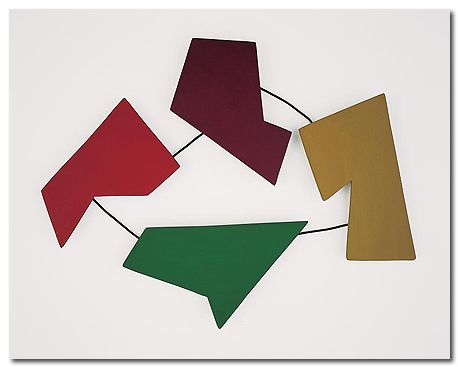The Blanton Museum of Art,
Feb 20, 2007 - Apr 22, 2007
Austin, USA
The Geometry of Hope
by María Amalia García
Abstraction’s travels The Patricia Phelps de Cisneros Foundation, in collaboration with the Blanton Museum (The University of Texas at Austin) has recently organized a new exhibit for its collection. Even though this ensemble of works has been showing at different museums in Latin America and the United Status ever since the end of the 90s, The Geometry of Hope, with recent curatorial work by Gabriel Pérez-Barreiro, sets off this well known group of works against a new background. On the one hand, the curatorial and editorial criteria that has been chosen establishes a model quite different from the previous curatorial experiences and catalogues of the Cisneros Collection. On the other hand, this exhibit’s assembly, within the framework of a post-graduate seminary, is the result of the marriage - fundamental yet not very common - between curatorial and academic investigation. The exhibit is a journey. It proposes urban tours in order to explore the dimensions of abstraction in Latin America. The perspective chosen by Pérez-Barreiro is different from the ones earlier advanced by Ariel Jiménez, curator of the Cisneros Collection whose Geo-metrías (Malba, 2003) was shown in Buenos Aires. Whereas the curatorial works carried out by Jiménez proposed a formalist model that took advantage of visual relations in the conceptualization of the exhibit (1), in the model advanced by Pérez-Barreiro a specific historical-geographical anchoring outlines the visual panorama. The operation involving the geographical background that emerges from using the city as a unified context allows The Geometry of Hope to propose a critical reading of ways for exhibiting what is known as "Latin American Art." In this sense, the city as a unit of analysis reveals itself pertinent since the establishment of specific nuclei allows, on the one hand, to escape imprecision and generalization of the continental framework as a whole, and, on the other hand, a central place to the urban dimension involved in these developments. The city, Pérez-Barreiro points out, is the center of a network that remains local as well as international. It was in the metropolis -understood as an international space- where the projects of abstraction emerged. In this sense, the proposed framework allows the activity of the different groups connected with geometric abstraction to be understood as "para-national" cultural creations grounded in the metropolis. The latter is undoubtedly an important point to make: if we understand these artists’ activities to belong to an avant-guard, it is necessary to break-away from the idea of a nation. Abstract projections were thought out as antagonistic to nationalist jurisdictions. (2) The exhibit proposes a tour through Montevideo, Buenos Aires, Sao Paulo, Rio de Janeiro, Paris and Caracas. This journey invites us to update the itineraries that the participating artists have followed: Buenos Aires-Montevideo, Säo Paulo-Buenos Aires, Caracas-Paris, just to mention some of them. In this sense, to include Paris among the Latin American cities allows one to advance its enrolment as a center of geometric abstraction; at the same time, outlining this international network avoids Manichean head-to-head encounters between the Old and the New Worlds. It is precisely within the interconnections among cities, that one should debate the issues of abstraction.
|

![Estudio 2 [Study 2] by Alejandro Otero](images/ve_otero_02_md.jpg)
![Pintura 9 [Painting 9] by Helio Oiticica](images/br_oitic_17_md.jpg)
![Função diagonal [Diagonal Function] by Geraldo de Barros](images/br_debar_01_md.jpg)




